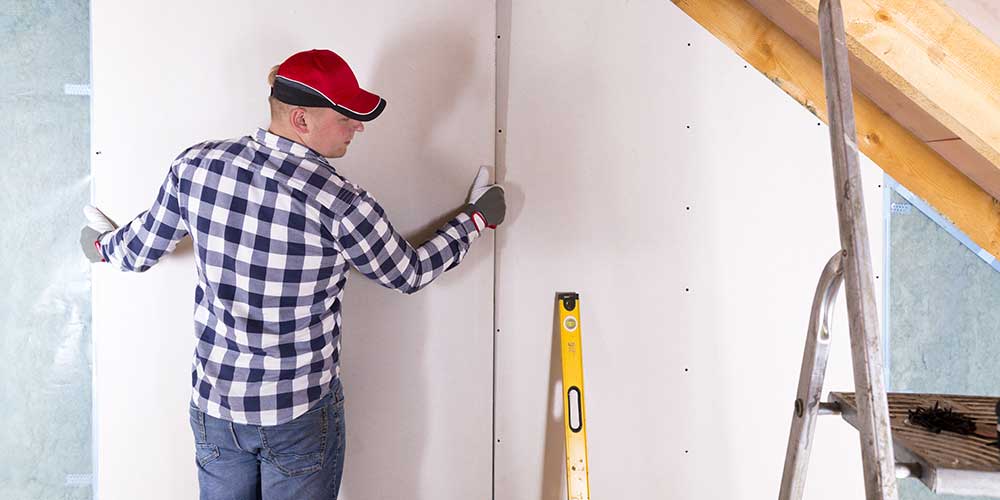
Dry Lining and Plastering
Fishbone Dry Lining LTD. has been transforming homes and buildings for over six decades. With all those years of experience behind us, we’ve become experts at modernising homes from both an architectural and structurally secure point of view. Our dry lining services are one of the best examples of that.
has been transforming homes and buildings for over six decades. With all those years of experience behind us, we’ve become experts at modernising homes from both an architectural and structurally secure point of view. Our dry lining services are one of the best examples of that.
What is dry lining?
Dry lining is the covering of a wall with a secondary layer of plasterboard substitute. This is usually attached to a wall in place of a traditional hard plaster finish.
Dry-lined plasterboard is somewhat easier to fit to a wall than a traditional plastering technique, and also produces less water wastage.
There are a wide variety of plasterboard types to choose from, as well as two main ways in which the board itself is attached to the timber of the wall:
- Tacking. This is the name given to the attachment of the plasterboard with nails. This is the cheaper option, but won’t always be the most effective way to ensure a long-lasting finish.
- Screwing. When screw fixings are the chosen option, you can expect a more secure attachment, which will last for a significant while longer. As such, this is often the preferred method.
The greatest challenge faced when administering plasterboard is tackling moisture, especially in bathroom areas. The best way to avoid this headache is to use a moisture-resistant plaster. These will usually be lined with wax, as the substance is incredibly effective at resisting water saturation.
Our dry lining services
- Traditional dry lining and plastering
- Metal stud partition on wall construction
- Metal stud shaft/riser wall construction
- Acoustic wall treatments
- Suspended ceilings
- Demountable ceilings
- Lay-in-grid ceilings
- Acoustic ceiling systems
- Semi-exposed soffit linings
- Traditional Screed
- Flowing Screed
The benefits of using dry lining
-
Fast & efficient
Unlike regular plastering, screwing or tacking on, dry lining is very quick, clean and easy for a professional. The job is significantly faster than traditional plastering, because you don’t have to wait for anything to set.
-
Covers up wires and pipes
Owing to the flexibility of drywall construction, it’s relatively easy to patch up any ugly pipes or wires which you no longer want visible. This is particularly useful in lofts and basements, where exposed piping is a relatively common occurrence.
-
Acoustics of a room
Soundproof plasterboard allows you to make a room more acoustically preferable. Whether that means trapping sound inside a conference hall or a teen’s bedroom, it’s a handy tool to employ.
-
Renovation & decoration
Whether you’re looking to patch up something which is damaged, or want to paint over an existing design, plasterboard is the perfect option. Both services are easily achievable, as well as cheap.
-
Insulation
The cavity found in dry-lined walls is significantly better at insulating heat than those found in traditional brick and block designs. This is a godsend if you’re looking to lower your energy bills.
What’s the difference between dry lining and plasterboard?
There’s a common misconception that plasterboard and dry lining are two different things. In reality, plasterboard is the material which gets attached to a wall as part of the dry lining process. The confusion comes from the similarity of the name to the plastering of a wall. This is a slower means of insulating a building, which relies on allowing the plaster to dry out over a longer period of time. In essence, plasterboard is the substitute material which makes dry-lining a home much quicker, easier and cost-effective.
